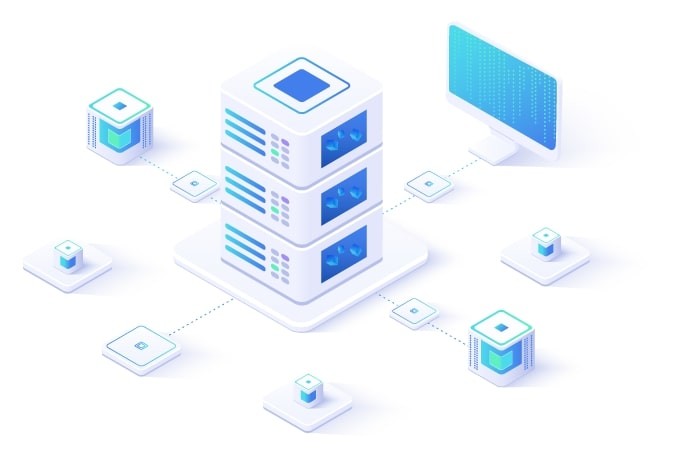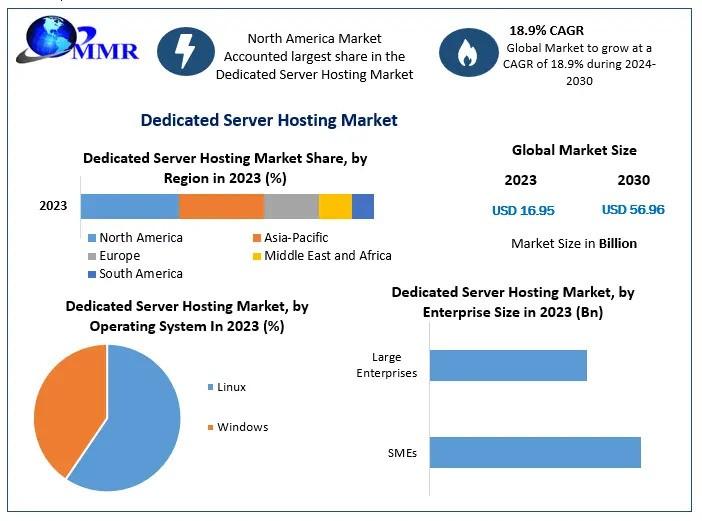
Are you looking to create a customized hosting environment for your website and applications? The best dedicated server hosting is a perfect option for you, as it gives you access to an entire server that is not shared with anyone else.
This is a great way to avoid the slowdowns or unresponsiveness that can occur when using shared hosting due to increased traffic. When setting up your own dedicated servers, you have the flexibility to choose the operating system, RAM, storage option, HDD or SSD, and bandwidth.
While this may be a bit of a challenge to do on your own, you have the ultimate freedom to decide how to best manage your dedicated server.
What Are the Benefits of Dedicated Server Hosting?
1. Reliable Performance: Dedicated servers provide superior performance as compared to shared hosting solutions. Dedicated servers are exclusively dedicated to a single user, meaning that your website won’t suffer from the performance issues caused by other websites hosted on the same server.
2. Enhanced Security: As the server is only used by a single user, there is a much lower risk of malicious attacks and data breaches. Dedicated servers also have the benefit of being more secure as they are not shared with other users.
3. Scalability: Dedicated servers can be easily scaled up or down depending on your needs, allowing you to easily adjust server resources as your website grows.
4. Cost-Effectiveness: Dedicated servers may initially cost more than shared hosting, but in the long run, they can be more cost-effective due to the increase in performance, scalability, and security.
5. Full Control: As the server is exclusively dedicated to you, you have full control over the server, including the operating system and software installed. This allows you to customize the server to your needs.
Different Kinds of Dedicated Hosting Solutions
1. Managed Dedicated Server: A managed dedicated server is one that is fully managed by the hosting provider. This means that all of the technical aspects of the server, such as maintenance, security, and updates, are handled by the hosting provider.
2. Unmanaged Dedicated Server: An unmanaged dedicated server is one that is not managed by the hosting provider. This means that the user is responsible for all of the technical aspects of the server, such as maintenance, security, and updates.
3. Dedicated Virtual Servers: A dedicated virtual server is one that is hosted on a shared physical server. This means that the resources of the server are shared between multiple virtual machines. The user is responsible for all of the technical aspects of the server, such as maintenance, security, and updates.
4. Cloud Dedicated Servers: Cloud dedicated servers are hosted on a cloud platform, such as Amazon Web Services or Microsoft Azure. This allows the user to access the server from anywhere in the world, as long as they have an internet connection.
5. Colocation Servers: Colocation servers are hosted in a data center. The user is responsible for providing their own hardware and managing the server. The hosting provider is responsible for providing the bandwidth and power necessary to run the server.
Creating a Custom Hosting Environment Using Dedicated Servers
1. Research Dedicated Server Providers: Before you create a custom hosting environment with dedicated servers, you should research different dedicated server providers to find one that fits your needs and budget. Make sure to compare the specs of each provider and check their reputation.
2. Choose Your Operating System: Once you’ve selected a provider, you’ll need to decide what operating system you want to use for your dedicated servers. Popular choices include Windows, Linux, and FreeBSD.
3. Configure Your Server: After you’ve chosen an operating system, you’ll need to configure your server. This includes setting up your server’s hardware and software, including the hosting control panel, web server, and database.
4. Install Necessary Software: Once your server is configured, you’ll need to install the necessary software for your hosting environment. This includes web applications, scripts, and databases.
5. Set Up Your Website: Once your server is configured and all the necessary software is installed, you can begin setting up your website. This includes designing the layout, creating content, and setting up your domain name.
6. Monitor and Maintain: To keep your hosting environment running smoothly, you’ll need to monitor and maintain your server. This includes making sure your server is secure, backing up your data regularly, and troubleshooting any issues that arise.
Conclusion
The advantages of a dedicated server are clear: more value for money, as clients can tailor their hosting environment to their specific needs. They can customize their servers, adding extra features to enhance the web hosting experience. Dedicated servers are more reliable than shared servers, and provide a better environment for daily business activities.
Furthermore, since dedicated servers are typically physical, it’s easy to modify the hardware configuration. However, upgrading the hardware of a dedicated server can result in downtime, so it is recommended to set up a separate testing server alongside the main one.
This allows for development and testing without the risk of downtime and enables the user to upgrade their server’s hardware resources with confidence, after transferring the site or application to the testing server. All in all, the best dedicated server are an excellent value for money, providing users with the best security and resources for their websites and applications.
https://www.linkedin.com/pulse/creating-customized-hosting-solution-dedicated-server-dhawan






